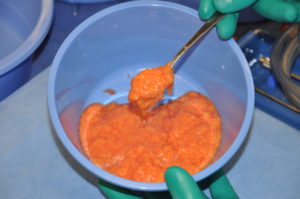
As we sit here today, what do we know about fat transplantation? Certain aspects of fat transfer do work well and have been used for years. The ‘old’ dermal-fat graft, while completely unknown to the public in general, is still a reliable method for correcting small contour problems or acting as an interface to thicken up some areas. Its problem is that it results in a scar from the harvest (must take skin and a thin layer of fat) so this is only good if you already have a scar somewhere or the scar is more ‘tolerable’ if the procedure is being done for reconstructive purposes rather than purely cosmetic. Small whole pieces of fat can work well but you have to again get the ‘chunks’ from somewhere (scars) and you then have to get it in where you need it. (possibly more scars?) So, these whole fat grafting methods can reliably work but their uses are more limited due to scarring.
Fat injections today remain, by far, more widely done than whole fat methods because they cause little if any scarring and their placement can be more precise……even if they do not work as well. Despite what is frequently touted, fat injections are unpredictable in how much actually ‘takes’. That is why overcorrection is always done. Why do they not always work well? The harvest of the fat, through liposuction, dices it into many minute pieces and kills some of the fat cells. Therefore, what is injected is some portion of liquid fat that will simply be resorbed. While we strain the fat obtained by liposuction, and this helps get rid of loose liquid and blood, and makes it more ‘concentrated’, there still is ‘dead’ fat in the concentrate. What we have not mastered, yet, is how to make those fat cells that survive this hazardous journey grow in their new home, rather than merely survive.
Recent scientific work and interest has been in the awareness that stem cells, which in theory can grow into any type tissue, are in great numbers in fat tissue. Why do these not grow after being injected with fat into more fat? Perhaps we have just not found the right trigger yet….whether it be a drug to mix with it or the type of fat injected.
The beauty of fat injections, despite their unpredictability, is that they are generally safe, easy to do (in the operating room), and the availability is plentiful in most patients. As plastic surgeons, we will continue to work with fat and I am confident one day we will turn it into a more reliable soft tissue filler.
Dr. Barry Eppley
Indianapolis, Indiana


